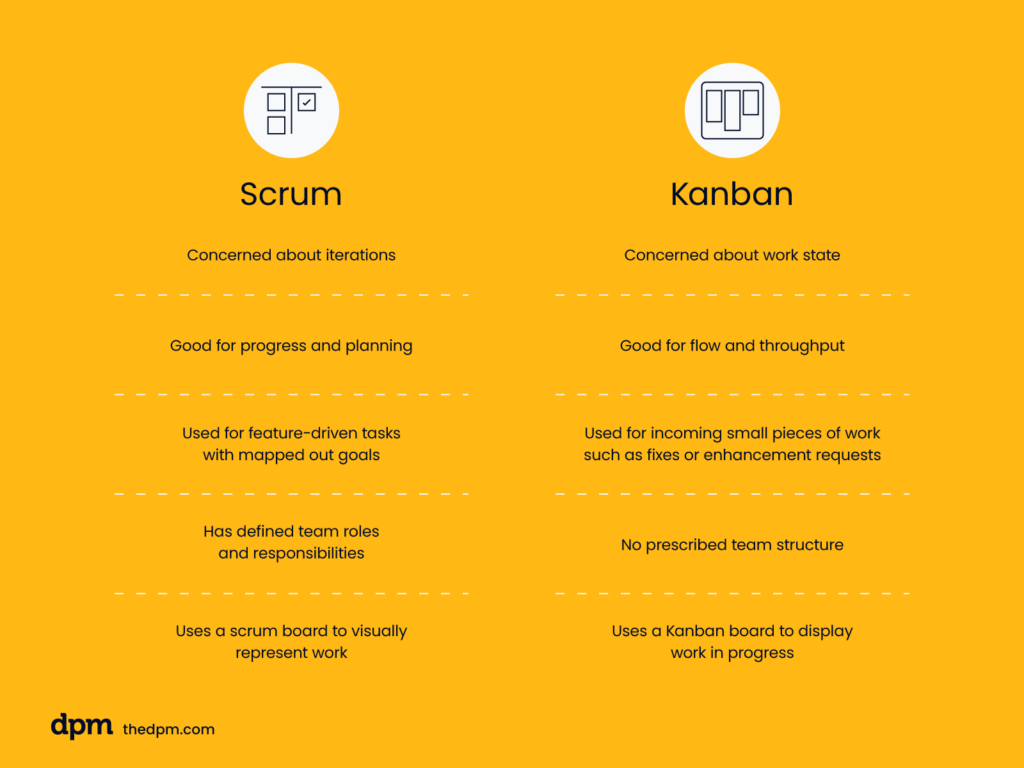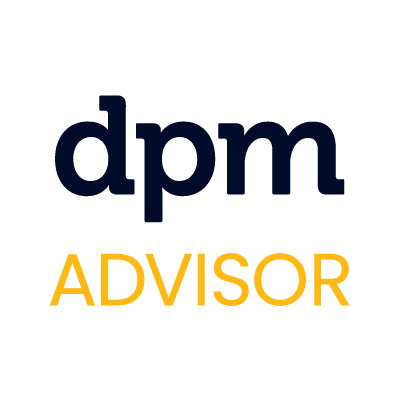Scrum is a methodology that emphasizes delivering chunks of work in increments called sprints, while Kanban is focused on continuous delivery.
They are both prominent agile approaches, and as such they are often confused for one another. Many people think they are two sides of the same coin, when in reality the differences are a bit more nuanced.
What is Agile?
Agile is a structured project management approach that prioritizes iterative and incremental delivery, flexibility, and adapting to changes in the project. It emphasizes the power of teams that can assign and initiate work themselves (i.e. self-organizing teams).
Kanban and Scrum are types of agile methodologies that teams can apply during project execution. Let’s explore each one separately.
What is Kanban?
Kanban is a project visualization technique that embraces the principles of lean manufacturing, continuous development, and customer orientation. Kanban teams can visualize work and the overall workflow to monitor project and individual task progress.
It helps development team members and the larger organization to understand the status of each task or deliverable, as well as in identifying organizational bottlenecks, which an organization can then attempt to fix using a cost-effective workflow at an optimal speed.
5 Benefits of Kanban
The Kanban methodology offers several benefits:
- Gives visibility into work in progress (WIP)
- Supports self-organizing teams to make decisions about what work and the amount of work to take on next
- Makes it easy to spot and correct workflow bottlenecks
- Adapts seamlessly to a variety of organizational environments
- Requires minimal lead time to get started
What Is Scrum?
Scrum is an agile framework that breaks iterations of work into set timeframes called sprints. Each sprint, which is typically two to four weeks in length, results in a theoretically shippable deliverable or iteration of work.
Scrum is most effective on small teams (typically a maximum of 10 members). During the sprint, the Scrum team tracks progress against tasks and re-plans, as needed, during daily scrum meetings, which are also known as standups.
5 Benefits of Scrum
The benefits of the Scrum framework include:
- Empowers team members to plan and estimate work
- Breaks down large, complex chunks of work into smaller defined tasks
- Offers flexibility in how work is structured and executed throughout the project life cycle
- Promotes continuous learning to improve future execution
- Adapts seamlessly to a variety of organizational environments
Key Differences Between Kanban & Scrum

Structure
Scrum focuses mainly on activity iterations, or small fixed units of time. These iterations are called sprints, which last two to four weeks and act as a timeframe for increments of work.
On the other hand, Kanban focuses on WIP. It does not include sprints. Rather than paying attention to activity duration and predictability, Kanban is more concerned with task execution.
Purpose
In Scrum, the team estimates the duration needed to build a feature to completion, using fixed sprints to measure progress and determine velocity. Measuring velocity is not intended to gauge productivity, but rather to help the team adequately plan the time it will take to deliver quality work.
The primary objective of Kanban is to ensure continuous flow with minimal bottlenecks. You can go further to impose WIP limits on each activity, or work item. Unlike Scrum, Kanban is better suited for projects without a significant functionality or product backlog (also known as a sprint backlog).
Roles
Scrum relies on three defined roles to plan, organize, administer, and optimize the methodology. These roles include:
- The product owner: in charge of initial planning, prioritization, and communication
- The Scrum master: responsible for overseeing sprint planning, sprint reviews, and sprint retrospective meetings
- The team members: tasked with executing the work identified for completion during each sprint.
Unlike Scrum, Kanban is much more flexible in terms of team composition and lacks prescribed team roles as part of its methodology.
Tools
Jira is the most commonly used software when it comes to agile software development.
The Scrum methodology uses a Scrum board to visually represent work items, or user stories. Check out this list of Scrum software for more information on how you can implement Scrum tooling on your project.
By contrast, the Kanban methodology uses Kanban boards to show WIP. The classic view includes categories for “To do,” “Doing,” and “Done,” but you can change the labels according to team or organizational preferences. Here’s a list of some of the best Kanban software tools to get you started.
Key Similarities Between Kanban & Scrum
Agile project management methodologies place a high value on continuous improvement, work optimization, and process. Both Kanban and Scrum focus on visualizing the flow of work to align team members on WIP and future goals.
In addition, both methodologies:
- Are lean and agile
- Limit WIP
- Focus on delivering releasable software often and early
- Use transparency to drive process improvement
- Break down complex work into discrete tasks
- Are based on self-organizing and cross functional teams
- Continuously optimize release plans based on empirical data and metrics (lead time/cycle time/velocity).
When to Use Kanban vs Scrum
Like so many questions in life, the answer is: it depends! Determining when to use which methodology depends on what your team is trying to achieve.
When To Use Kanban
Use Kanban when you have a larger team that's more concerned with optimizing throughput than delivering specific chunks of work at specific times. Kanban works well for addressing incoming small pieces of work, such as defect fixes, customer support tickets, or small enhancement requests.
When To Use Scrum
Use Scrum if you’re part of a small team executing feature development work, and you don’t mind spending upfront time to implement a more complicated framework.
When To Use Both
Many teams benefit from a hybrid methodology called Scrumban. Scrumban takes Scrum's timeboxed sprints and daily planning sessions and Kanban's emphasis on visualizing in progress and upcoming work to put a focus on delivering in increments while still looking ahead to the next sprint.
Scrumban works best in situations where priorities are constantly shifting or where smaller increments of work are needed, such as developing new features for a product that already exists, or support tickets.
Need expert help selecting the right Kanban Software?
If you’re struggling to choose the right software, let us help you. Just share your needs in the form below and you’ll get free access to our dedicated software advisors who match and connect you with the best vendors for your needs.
What's Next?
When do you prefer to use Kanban? How about Scrum? Join the conversation in Slack with 100's of other digital project managers with DPM Membership!



